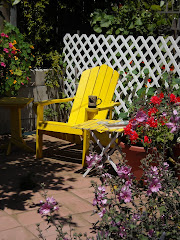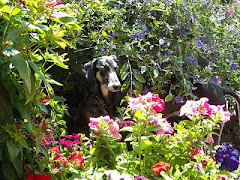Blowsy. Seriously, that’s the dahlia for you. Overdone, overwrought, seriously overdressed. But spectacular.


Except the smaller versions which can be prim Miss Priss, especially served up as single-serve blooms delicately scattered on a table. Then they’re all Miss Manners.

Morro Bay celebrates its 50th Anniversary as a City this year and also was celebrating its city flower, the Dahlia, with a Dahlia Daze event at the community center. There was a dahlia exhibition, contest, sale, lectures.
Including a most informative one on the issue of Monarch Butterflies and milkweed. Throughout the butterflies migration paths, the only source of food for their larva, the milkweed, is being killed off by pesticides and loss of habitat. And, no milkweed, no Monarchs. So farmers and ranchers are being encouraged to plant milkweed throughout their property and in fallow areas alongside their crops. Homeowners are also encouraged to do the same.
Except if you happen to live in the narrow coastal strip. In that microclimate, planting milkweed to help the Monarchs is counterproductive. According to Peggy Coon of the Pismo State Beach Monarch Butterfly Grove, planting milkweed along the coastal strip lures Monarch to lay eggs on the plant. Then, after the larva hatch and are happily munching, the coastal cool weather causes the plant to die back before the Monarch larvae have gone into their chrysalis mode. So the poor larvae, lured to a bad neighborhood by well-meaning humans, starve to death.
So, if you live in Los Osos, ixnay on the milkweed. But, you are encouraged to fill your garden with all sorts of winter-blooming flowers for the Monarchs to sip nectar from. Lantana is a good choice since those plants are both drought tolerant and loaded with flowers for butterflies.
But, if you live in San Luis Obispo, (Or over the hills in Paso) plant all the milkweed you like. Milkweed thrives in that hotter, drier environment. So you get to plant both milkweed and winter-blooming flowers.
Then everyone can head down to the Pismo Butterfly Grove when opens daily October 31st through February 26 to host these spectacular (and threatened) butterflies. Or Morro Bay State Park’s eucalyptus groves or Hazard Canyon in Los Osos.
Dahlia’s, on the other hand, clearly like the coastal cool. Makes ‘em run amok. Like your Aunt Sadie after one too many gin and tonics on a New Year’s eve.














5 comments:
Spectacular photos! WOW!!!
Thanks for the info NOT to plant milkweed along the coast. Totally makes sense and I sure had no idea! I have lantana though and it sure is easy to grow, plus no mildew!!
Dahlias are above my skill grade, but they sure are gorgeous to look at!!
Yeah. I tried planting some dahlias once. The snails loved 'em!
I'll just bet they did!
Silver lining in the black drought cloud - my yard barely has any snails anymore! It used to be loaded with them, and now - only one, every now and then. (Dispatched to snail heaven painlessly and quickly, and my plants thank me too.)
They are NOT Shoulderband snails either, I do know the difference having worked at Sweet Springs East some time back. Those guys were doing well down there then, I hope that they are now too. It's a lot wetter down there than up here on 16th.
Yeah, come to think of it, seeing fewer snails. Suspect they're hibernating? Or have laid their eggs and died and when it rains the eggs will hatch.
I have found snails that looked to be hibernating, but they look pretty dried up under the seal they put out.
Oh, ugh, eggs. I just read that the eggs are buried in topsoil in a cool place. Not sure where that is in my yard these days! Oh well, once we get some rain—if we get some rain—I guess we'll find out!
Post a Comment